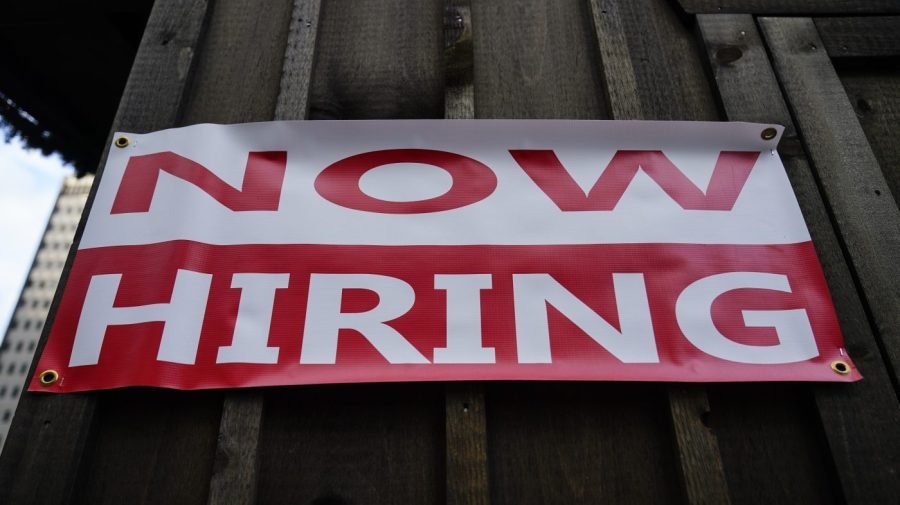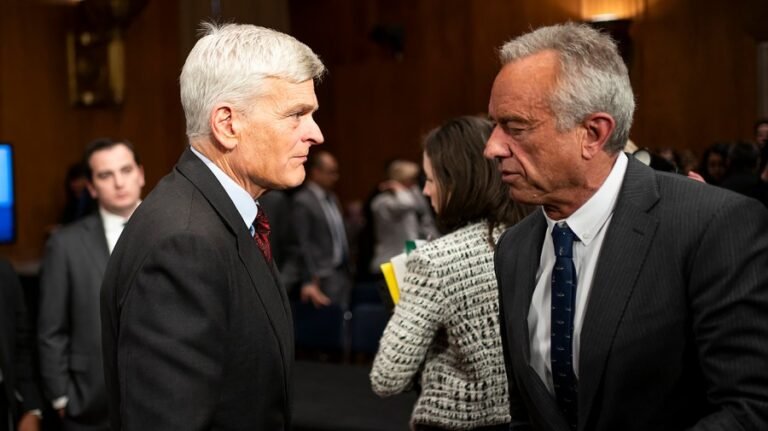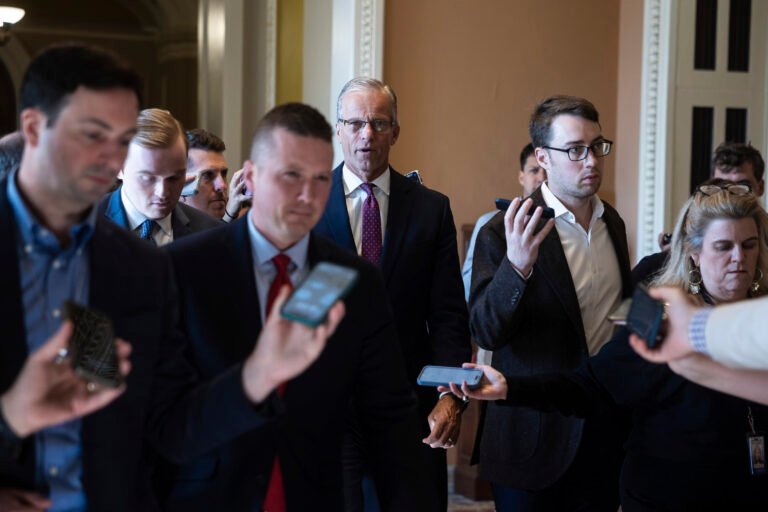
Job openings and hiring increased slightly in April ahead of the Friday employment report from the Labor Department, which will be a major data point for the Federal Reserve as it determines the path for interest rates that undergird economic activity.
Like other economic factors, including capital expenditures and consumer spending levels, employment conditions are in a holding pattern as companies wait to see where U.S. tariff policy lands amid President Trump’s ongoing trade war and his fragile truce with top trading partner China.
Job openings increased to 7.4 million in April from 7.2 million in March, according to data released Tuesday. New hires increased by about 170,000, while separations also increased, with about 100,000 workers leaving their roles.
While many sectors reported fewer job openings in April, bigger industries including professional services and health care more than made up for the reductions in the smaller sectors.
Job openings have been fluctuating between 7 million and 8 million per month for about a year now, after descending rapidly off a postpandemic high around 12 million. There’s now one open job for every job seeker in the economy.
The rate of people quitting their jobs — viewed informally as a general measure of job security — decreased slightly to 2.0 percent in April from 2.1 percent in March as a share of total employment, while contracting by 0.1 percent compared to last year. The quits rate has remained within a 0.1-point range of 2.0 percent since May 2024.
Economists are seeing the modest variation in the context of increased policy uncertainty.
“Modest gains in job openings and layoffs suggest that employers are proceeding cautiously with headcount decisions despite elevated uncertainties about the economy and policy,” wrote Noah Yosif, economist with the American Staffing Association, in a Tuesday commentary.
Trump summoned Fed Chair Jerome Powell for a meeting last week as the president’s negotiations continue.
Many economists, including those in the Fed, have been predicting higher inflation as a result of Trump’s tariffs, and Trump has been telling Powell to lower interest rates to support the economy. This comes even as inflation has been falling in recent months, dropping to a 2.1 percent annual increase in the April personal consumption expenditures (PCE) price index — close to the Fed’s target rate of 2 percent.
Powell said in May he’s looking for indications unemployment could rise in response to Trump’s tariffs.
“I am watching for signs that the labor market could cool as tariff increases begin to weigh on economic activity,” he said.
Hiring within small businesses is also in a holding pattern. Job growth as measured in the Paychex Small Business Employment Watch held steady across May and April, delivering flat employment growth since the beginning of the year.
“Despite the rapidly changing news cycle, the underlying labor market remains fundamentally healthy,” Paychex CEO John Gibson said Tuesday in a statement.
Many economists are viewing the employment situation, along with many other economic variables, as a direct consequence of developing White House trade policies.
China and the U.S. paused triple-digit tariffs on each other last month, which brought the overall U.S. tariff level down from around a century-high 25 percent and closer to 15 percent. This improved many economic forecasts.
Revisions by Deutsche Bank to predictions made in April showed lower unemployment and inflation, and revisions for growth were higher.
“The key innovation to the outlook over the past month has been a quicker de-escalation in trade tensions, particularly with China,” analysts for the bank wrote in a Monday note to investors.
Despite the trade détente with China, tensions flared this week as both sides traded barbs.
“The bad news is that China, perhaps not surprisingly to some, has totally violated its agreement with us. So much for being Mr. Nice Guy!” Trump wrote on his social media website on Friday.
China on Monday said the U.S. violated the deal by issuing export control guidelines for artificial intelligence hardware, stopping chip-design software to China, and revoking Chinese student visas.
In its statement, the Chinese Ministry of Foreign Affairs accused the U.S. of unilaterally provoking new economic and trade frictions.
Despite the accusations and targeted actions, neither country reimposed its triple-digit tariffs.
In the minutes of their latest meeting to set interest rates — which notably took place before the trade truce was announced on May 12 — Fed bankers saw unemployment rising “substantially” through the end of the year in the context of trade policy.
“The labor market was expected to weaken substantially, with the unemployment rate forecast moving above the staff’s estimate of its natural rate by the end of this year and remaining above the natural rate through 2027,” the minutes for the May 6 meeting read.
Economists say the Friday jobs report will show if employers are feeling positive or negative about the economic and policy outlook.
“Should Friday’s jobs report reveal a significant contraction in non-farm payroll growth relative to its three-month average, it would confirm employers are adopting a more pessimistic outlook toward future headcount decisions,” Yosif wrote.
Bankrate economic analyst Mark Hamrick said he expected 125,000 jobs to be added to the economy in the May report and that the unemployment rate would hold steady at 4.2 percent, where it is now.
“Despite ongoing uncertainties from tariffs and broader economic volatility, new unemployment claims have remained relatively restrained,” he observed in a Tuesday analysis, adding that the Fed would “continue in ‘wait and see’ mode” when it came to upcoming interest rate decisions.
As employment conditions and other economic variables have been held in abeyance during the trade reset, wage growth has been moderating, dropping to a 3.77 percent increase from 3.83 percent in March, off a recent high of 4.15 percent in November of last year.
Total inflation-adjusted hourly compensation was flat in the first quarter after falling to a 1.2 percent increase in the fourth quarter of last year.


